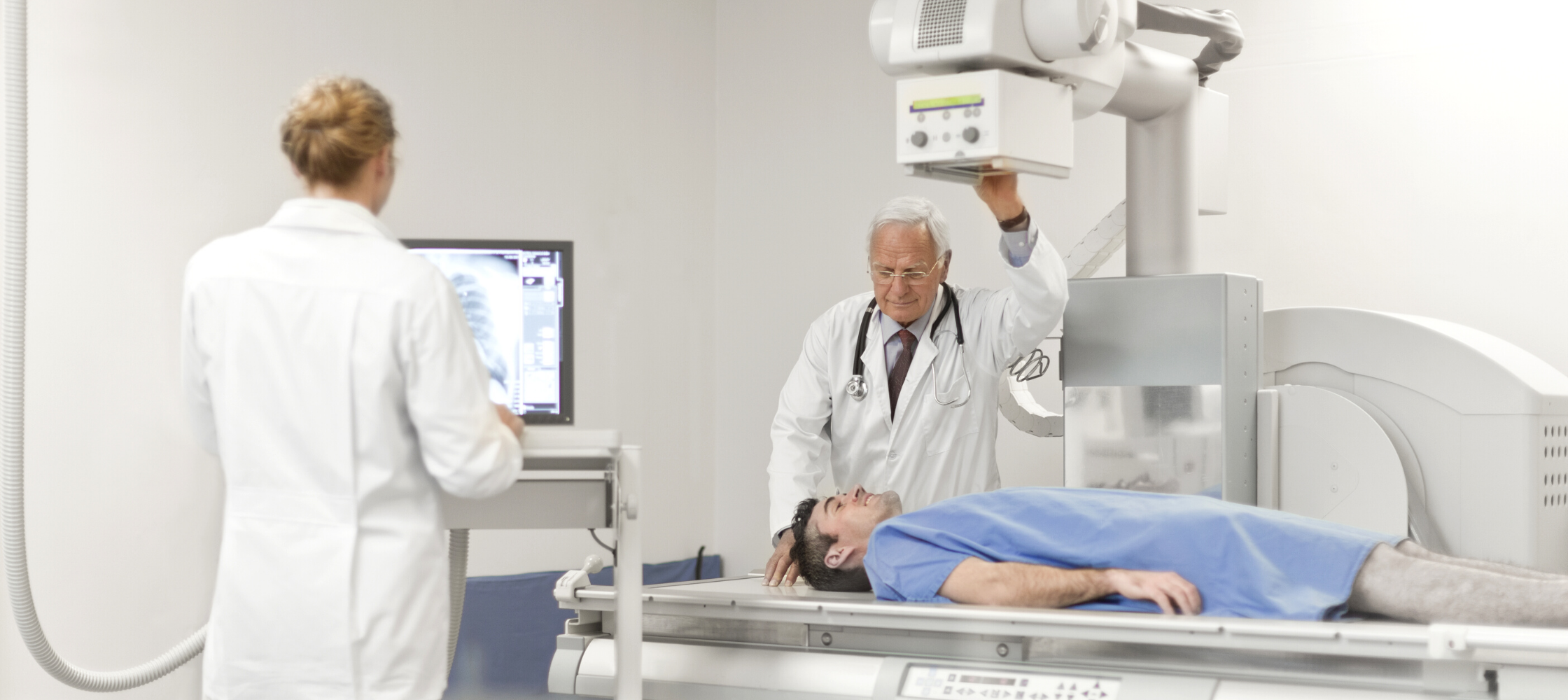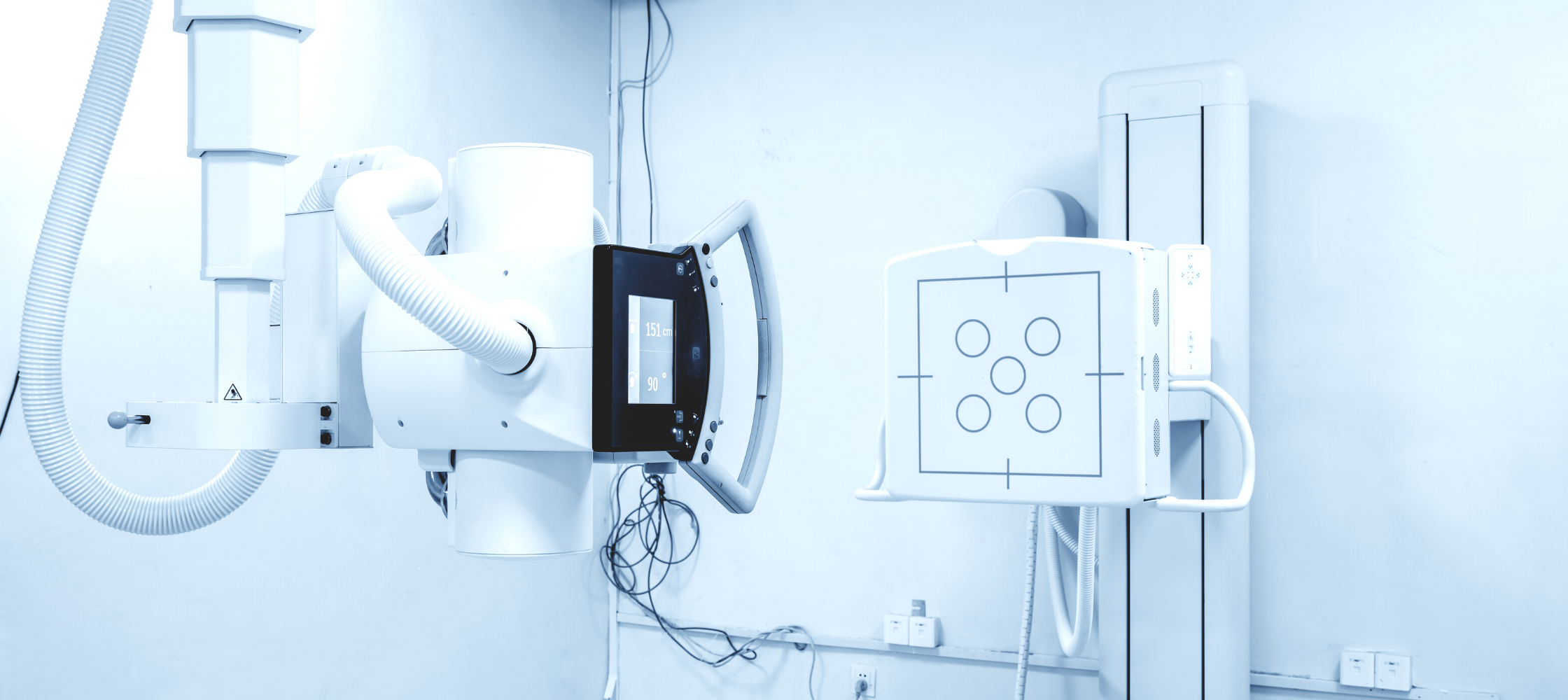The global digital x-ray market is growing at a compound annual growth rate (CAGR) of 5.5%. In 2020, the industry was worth 7.1 billion, and by 2026, it will be worth $16.4 billion.
Why are digital x-rays so popular?
- Digital X-rays are associated with a lower radiation dose compared to traditional film X-rays, with a median dose reduction of 46%.
- 80% of orthopedic surgeons use digital X-rays in their practice, with the majority citing faster results and better image quality as the main advantages.
- Digital X-rays had a higher diagnostic accuracy compared to traditional film X-rays, particularly for subtle fractures and soft tissue injuries.
Digital X-rays have become an essential tool in medical imaging, with widespread adoption and growing demand driven by their lower radiation exposure, superior image quality, and ease of use.
In this article, we’ll look at what a digital x-ray is, how it works, the benefits of the system, and the different types of digital x-rays today.

What Is A Digital X-Ray?
A digital x-ray is imaging technology that uses digital sensors to electronically capture and store x-ray images, instead of using traditional film. This has largely replaced the use of film in modern medical imaging because it offers a number of advantages over traditional x-rays.
In digital x-rays, a sensor captures the image, where it’s immediately available on a computer screen. This allows the radiologist or technician to view and analyze the x-ray more quickly and easily than film.
Digital x-rays also allow you to digitally enhance and manipulate the image, allowing for a more accurate diagnosis and better visualization of subtle details.
Digital x-rays also require lower radiation doses than film, which makes them safer for everyone involved. They provide a faster, more accurate, and safer way to diagnose and treat a wide range of patients and medical conditions.
How Does A Digital X-ray Work?
Digital x-ray equipment works by using electronic sensors to capture images of the body's internal structures. The patient is positioned between the digital sensor and the x-ray machine, which then emits a controlled amount of radiation that passes through the body and onto the sensor.
As radiation passes through the body, the digital sensor captures it and converts it into an electronic signal. This signal is then sent to a computer, where it is processed and converted into a digital image.
The digital image can then be displayed on a monitor for review by the radiologist or other medical professional.
Unlike traditional x-rays, digital x-rays do not require development of the image. The image is captured and processed digitally, which allows for immediate viewing and analysis.

You also have the ability to manipulate the image digitally. The radiologist can:
- Zoom in on specific areas
- Adjust brightness and contrast
- Enhance specific features
These features improve the accuracy of the diagnosis and allow for more precise treatment planning. This is why digital x-ray systems provide a faster, more accurate, and safer way to diagnose and treat people.
What are the Benefits of Digital X-rays?
Digital X-rays offer several benefits over traditional film, including:
Quick Results
Digital x-ray systems produce images instantly, which means patients and medical professionals can view them right away, rather than waiting for film to develop.
Improved Quality
Produce higher-quality images using digital x-rays, which makes it easier for medical professionals to detect and diagnose conditions.
Lower Radiation Exposure
Digital x-rays require lower doses of radiation than traditional X-rays, making them much safer for patients.
Eco-friendly
Since digital x-rays do not require the use of film, chemicals, or paper, they are better for the environment and produce less waste.
Easy to Manage
Digital X-rays can be stored electronically. This makes digital x-rays easy to manage and transfer between healthcare providers when needed. This vastly improves the speed and accuracy of diagnosis and treatment.
Digital x-rays offer many benefits over traditional film, including faster results, improved image quality, and lower exposure to radiation. This makes digital x-rays a valuable tool for diagnosing and treating a wide range of medical conditions.
The Different Types of Digital X-ray Systems
There are several types of digital X-ray systems, each with its own unique features and advantages. Here are some of the most common types:
Direct Radiography (DR)
These systems use a digital detector to capture x-rays, which are immediately available for review on a computer. DR systems provide high-quality images with excellent detail and contrast.

Computed Radiography (CR)
CR systems use an imaging plate coated with a special photostimulable phosphor to capture images. After exposure, the imaging plate is scanned by a laser to create a digital image. Like a DR, this image is then available for review on a computer screen.
Portable X-ray
Portable x-ray machines are designed to be lightweight and compact, making them easy to move between locations. These types of x-ray systems are commonly used in settings such as hospitals, veterinary offices, dentists, nursing homes, and sports arenas.
Fluoroscopy
Fluoroscopy is a type of x-ray that allows real-time imaging of the body's internal structures. Fluoroscopy systems use a continuous x-ray beam to create images that are displayed on a monitor. These systems are commonly used to guide medical procedures such as catheter insertion or joint injections.
Cone Beam CT
Cone beam CT (CBCT) provides detailed 3D images of the body's internal structures. CBCT systems use a cone-shaped beam to create a series of 2D images, which are then reconstructed into a 3D image. These systems are commonly used in dentistry, orthopedics, and other medical specialties.
Summing it Up
If you’re still using film for x-rays, it may be time to update your system. Digital exposures create a higher level of safety and accuracy that’s unparalleled. The systems offer quick results with improved quality.
There are many different types of digital x-rays depending on what you need to accomplish. From direct radiology to portable machines, there’s something for everyone. Have questions about installing a digital x-ray system in your office? Contact us for a free quote today.

